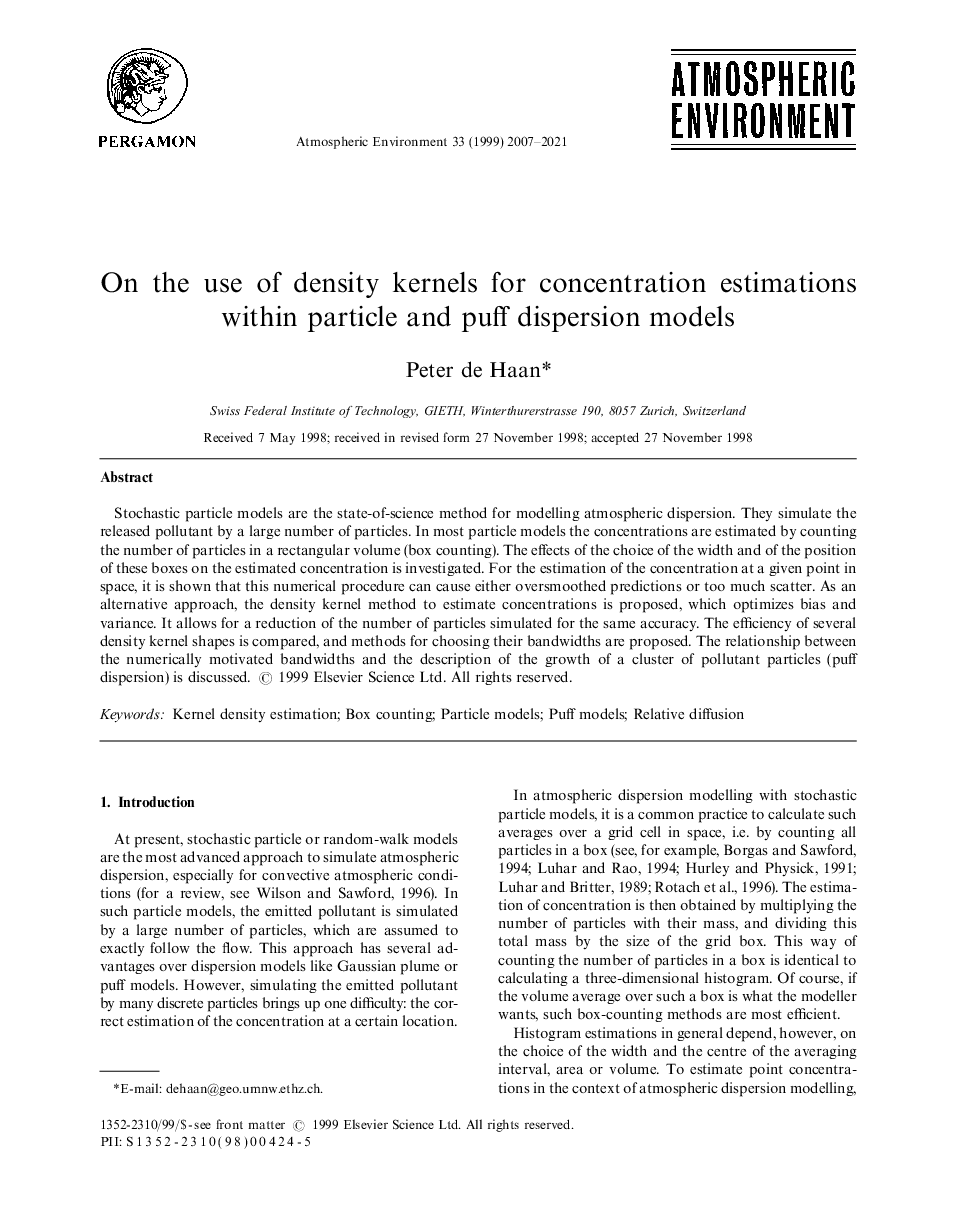| Article ID | Journal | Published Year | Pages | File Type |
|---|---|---|---|---|
| 4447473 | Atmospheric Environment | 2007 | 15 Pages |
Stochastic particle models are the state-of-science method for modelling atmospheric dispersion. They simulate the released pollutant by a large number of particles. In most particle models the concentrations are estimated by counting the number of particles in a rectangular volume (box counting). The effects of the choice of the width and of the position of these boxes on the estimated concentration is investigated. For the estimation of the concentration at a given point in space, it is shown that this numerical procedure can cause either oversmoothed predictions or too much scatter. As an alternative approach, the density kernel method to estimate concentrations is proposed, which optimizes bias and variance. It allows for a reduction of the number of particles simulated for the same accuracy. The efficiency of several density kernel shapes is compared, and methods for choosing their bandwidths are proposed. The relationship between the numerically motivated bandwidths and the description of the growth of a cluster of pollutant particles (puff dispersion) is discussed.
